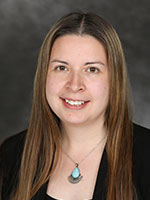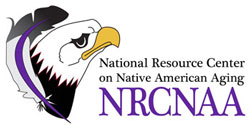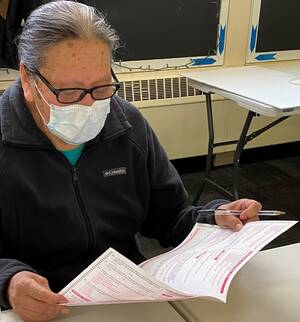What Do Urban Native Elders Need?
By Jena Pierce on
American Indian Elders living in urban locations are fighting for health equity. This inequity is all they have known, and often, the lack of resources and historical trauma means that preventative care along with serious illness goes untreated.
 Until now. In 2019 the
Coalition on Urban
Indian Aging (CoUIA) was created through a unique
partnership among six organizations with one goal in
mind: improving health equity for Elders. They have
planned how to find the data needed to recognize what
urban Elders need.
Until now. In 2019 the
Coalition on Urban
Indian Aging (CoUIA) was created through a unique
partnership among six organizations with one goal in
mind: improving health equity for Elders. They have
planned how to find the data needed to recognize what
urban Elders need.
Who Is an Elder?
Urban Elders, for the purpose of this project, are defined as American Indian/Alaska Native people older than 50 who live in an urban area, not on a reservation. In order to increase resources for these people, needs must be identified, which led to the creation of the Native Urban Elder Needs Assessment Survey (NUENAS 1.0).
Identifying Needs

 Dr.
Collette Adamsen is the director of the National Resource Center on Native
American Aging (NRCNAA), which is administering the
survey.
Dr.
Collette Adamsen is the director of the National Resource Center on Native
American Aging (NRCNAA), which is administering the
survey.
"This project is important because it is about supporting the urban centers who serve our Native urban Elders," said Adamsen, "by using the identified needs gathered from the survey to assist in connecting them with resources and funding to address those needs for our Elders. Our Native urban population is underrepresented in national data sets, which is key to identifying and addressing the needs of this population."
Our Native urban population is underrepresented in national data sets.
As Adamsen put it, if there is no data to justify the needs, then urban Native Elders are left out of the conversation, especially when it comes time for the allocation of resources and funding.
"This survey will give the urban Native Elders a voice to tell their story through the data to ensure they are represented and not left behind," she said. "It is our hope that this project will help in improving the quality of life for the elders and to work in partnership with the urban centers to provide the support system to accomplish this goal."
Working Together
Partners leading this effort include:
- AARP
- Administration for Community Living
- Center for Rural Health
- Kauffman and Associates, Inc.
- National Council of Urban Indian Health
- National Indian Council on Aging, Inc.
- NRCNAA
Members from each organization came together to create CoUIA, to ensure representation from various groups while focusing on the bigger picture: helping urban Native Elders. There are 137 questions on the survey covering topics such as physical, social, emotional, and mental health service quality; overall quality of life; unidentified needs; COVID-19 resources and care; and others.
All questions asked will provide data to support improvement of health equity, quality of life, and overall cultural responsiveness. The survey was designed to be taken online using computers, tablets, or smart phones – or on paper. Assistance may be given to help Elders fill out the surveys.
The Pilot Survey Site
"There has been a renewed focus on Elders in Nebraska, focusing on kinship roles," said Dr. Donna Polk, chief executive officer of the Nebraska Urban Indian Health Coalition (NUIHC). "We know there are a lot of Elders who are caring for young people in their homes, and we need to make sure that these Elders are capable and have the resources required in order to do a good job. Whether it is food security, home security, environmental security, financial security, all of this ties into their health. I was pleased to have been asked not only to participate in the survey but to be the first urban program to do so."
 NUIHC, which is located in Omaha,
Nebraska, was the first site to facilitate the survey. It
hosted the first group of Elders to take the survey at
the Nebraska Urban Indian Medical Center in Lincoln,
Nebraska, and had 26 respondents. Appointments were made
so everyone could be spaced both in time and socially
distanced while in the room. The second survey site was
at the NUIHC office in Omaha with four respondents.
NUIHC, which is located in Omaha,
Nebraska, was the first site to facilitate the survey. It
hosted the first group of Elders to take the survey at
the Nebraska Urban Indian Medical Center in Lincoln,
Nebraska, and had 26 respondents. Appointments were made
so everyone could be spaced both in time and socially
distanced while in the room. The second survey site was
at the NUIHC office in Omaha with four respondents.
Paper surveys were used, and staff was available if anyone needed help or had trouble understanding the questions.
"We need this information to justify getting money to increase access," said Dr. Polk. "If you can't get to the hospital, it will not have the type of effect we want to see. If you can't get there, but you had a tablet and knew how to do telehealth, then you increase access. That is why this information is so valuable, so we can figure out who needs what and when and how."
Recruiting Urban Centers
In April, CoUIA began recruiting urban Indian health organizations to participate in the survey. The initial focus is on those organizations with an Elder program. The survey will be administered from May to November 2021. Each organization will receive an incentive, as well as funds to provide honoraria for the participants.
We want to build partnerships and trusting relationships with the urban centers and the Elders.
"We know this is a first-round project with a learning curve," said Adamsen. "We would be happy to have around 1,000 Elders participate in the survey. If there are more, that would be fantastic. We want to build partnerships and trusting relationships with the urban centers and the Elders."
Once the survey is complete, each organization will receive its specific data, as well as access to the aggregate data for urban Elders. Once data from the survey is collected and analyzed, work can begin to increase health equity for this population.
We want to help empower our urban Native Elders to connect them with needed resources.
"Working with the urban organizations," said Adamsen, "allows us to use the data to help tap into funding streams and resources that were not available to them previously. We want to help empower our urban Native Elders to connect them with needed resources to assist them in having a better quality of life."


 is the communications manager at the Center for Rural
Health at the University of North Dakota School of
Medicine & Health Sciences in Grand Forks.
is the communications manager at the Center for Rural
Health at the University of North Dakota School of
Medicine & Health Sciences in Grand Forks.



